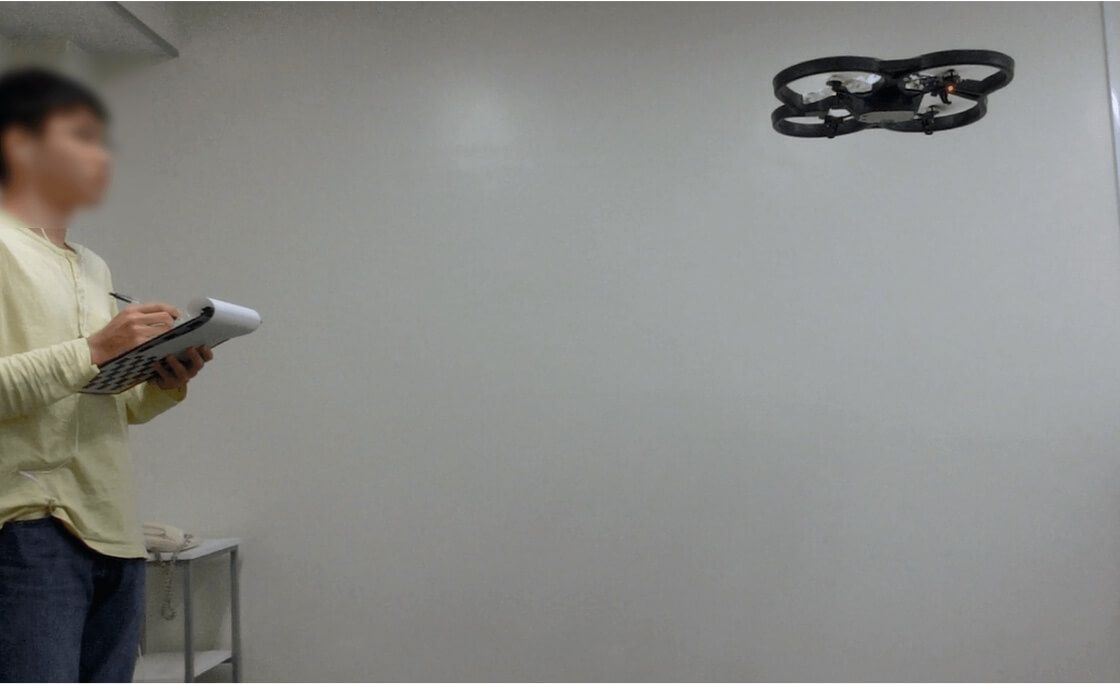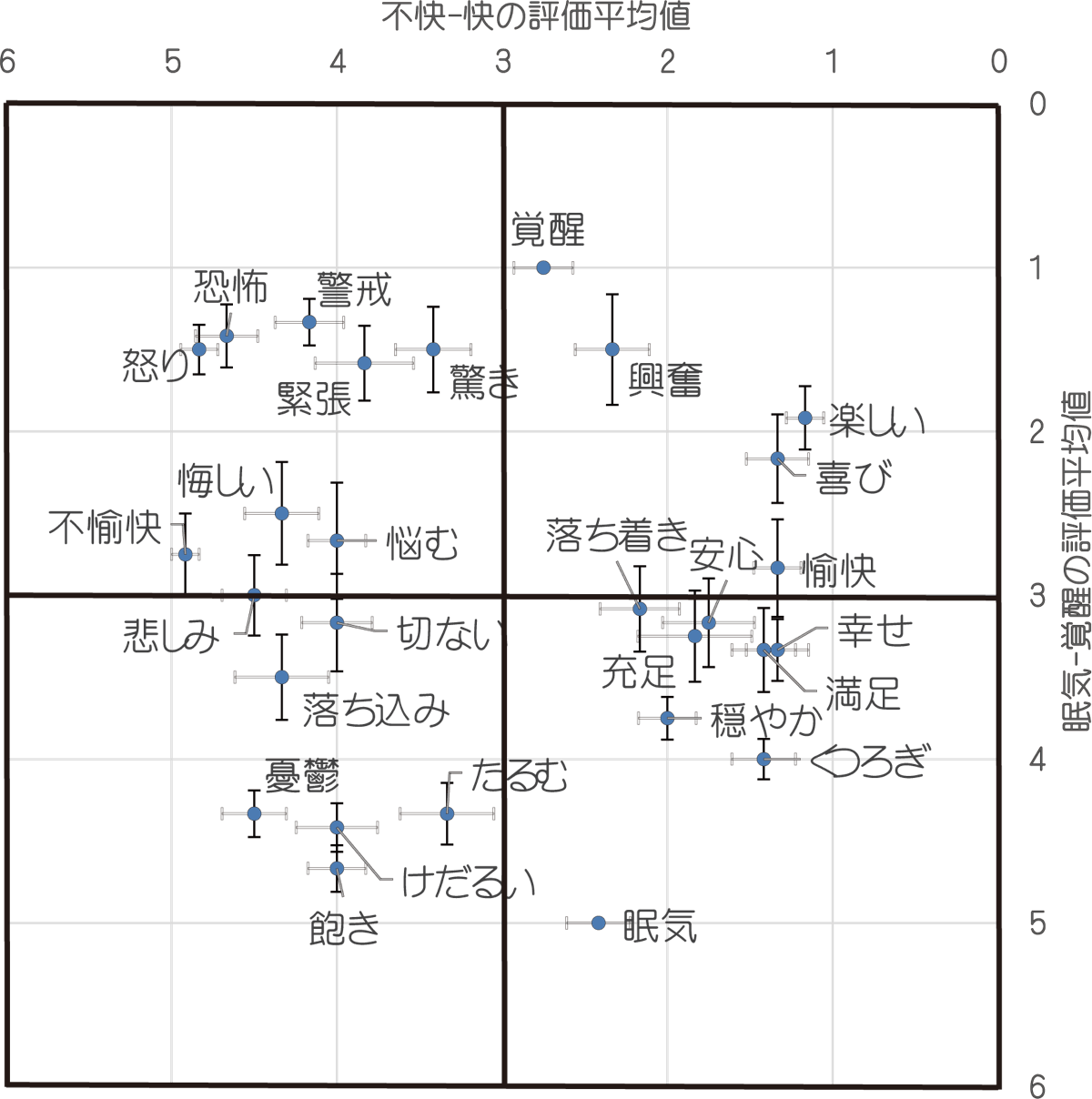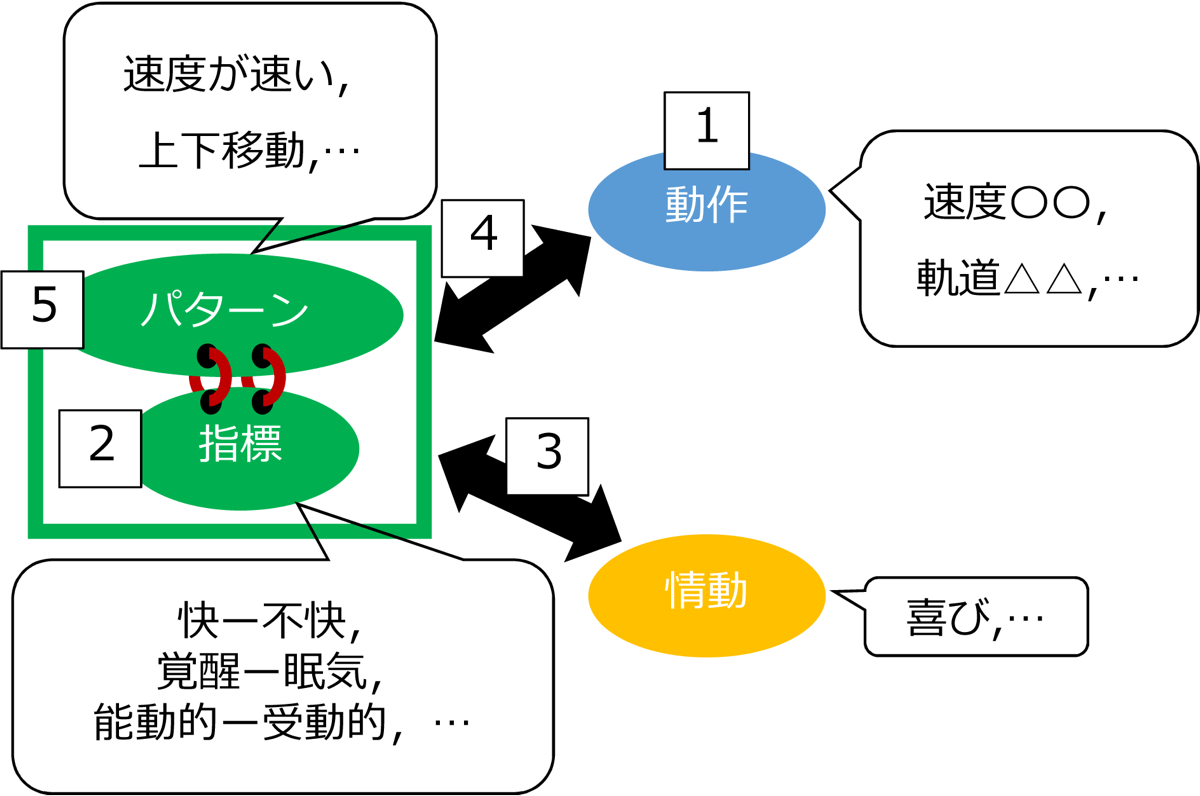コミュニケーションドローン
徐々にロボットは一般社会に浸透しつつあります。
ロボット掃除機は市場を拡大しつつあり、ソフトバンクのPepperも一般家庭や店舗に導入されています。
一般社会にこうしたロボットたちが導入されるということは人とロボットが関わる機会が増えているということでもあります。
こうした機会が増えれば増えるほど、ロボットが人とどのようにコミュニケーションをとるかということを考えなくてはなりません。
本研究ではその一つとして、身体的に人とかけ離れたロボットである飛行型ロボットによる情動表現を考えます。
飛行型ロボットの飛行能力を生かし、常に人の身近に存在し、日常的に人をサポートするパートナーのようなロボットを目指します。

どのような動作が人に情動を伝えることができるのかを解析するため、第三者に喜怒哀楽の動作を作成してもらい、それを被験者に評価してもらい結果を解析しました。
評価内容は能動的度、快度、覚醒度の5段階評価と最も喜怒哀楽に見える動作を選んでもらうというものです。

その際、英語と日本語で印象の違いがでる可能性があったため、ラッセル円環モデルを日本語で再構築しました。

そして結果として能動的度が前後方向のパラメータに快度が上下の加速度に覚醒度が上方向の移動量に相関していることがわかりました。つまり、他者の方向に対してアプローチすると能動的であり、上下方向にアクティブに動くと快であり、重力に反して上方向に移動するほど覚醒度が高いという結果でした。(詳細は論文へ)
- 1. ロボットでいくつかの情動動作表現を作成する
- 2. 使用する指標を決定する
- 3. 被験者実験によって,指標を用いて情動ワードを評価させる
- 4. 被験者実験によって,指標を用いて動作を評価させ,指標を表し得る動作の要素をLassoを用いて解析する
- 5. 動作を観察し,パターンを抽出する

今回のパラメータを使って作成した動作は、被験者実験により想定した感情を表現できていることがわかりました。
業績:
日永田智絵, 工藤俊亮, and 末廣尚士. "飛行型ロボットによる情動表現動作に向けた動作要素の抽出." 日本ロボット学会誌 37.9 (2019): 856-863.
Hieida, Chie, et al. "Action elements of emotional body expressions for flying robots." 2016 11th ACM/IEEE International Conference on Human-Robot Interaction (HRI). IEEE, 2016.
COMMUNICATION DRONE
In recent years, flying robots have been attracting worldwide attention. Some companies are developing transportation systems based on flying robots.
In this research, I consider how flying robots can cooperate with people and how it may communicate with people on a daily basis. Toward this goal of human-robot communication, I investigated emotional body expressions by flying robots.

Evaluation experiments that clarified the relation between the parameters and subjective feeling of the expressions were performed.
Two classes of subjects were used: designers and evaluators. Eight designers, who were in their 20’s, took part in the study. The designers were divided into four teams and asked to design flying robot motions to express four emotions per team: sadness, anger, pleasure, and joy. Twelve evaluators, in their 20’s to 50’s, took part in the study.
The evaluators observed the sixteen videos (four motions by four teams) and answered a questionnaire to evaluate the motions.



In the results, pleasure-displeasure and arousal-sleepy comprise action elements in the gravitational directions, powerful-delicate, pinpointing-flexible,and hasty-leisurely comprise action elements in the gravitational and personal directions.
PUBLICATION:
日永田智絵, 工藤俊亮, and 末廣尚士. "飛行型ロボットによる情動表現動作に向けた動作要素の抽出." 日本ロボット学会誌 37.9 (2019): 856-863.
Hieida, Chie, et al. "Action elements of emotional body expressions for flying robots." 2016 11th ACM/IEEE International Conference on Human-Robot Interaction (HRI). IEEE, 2016.